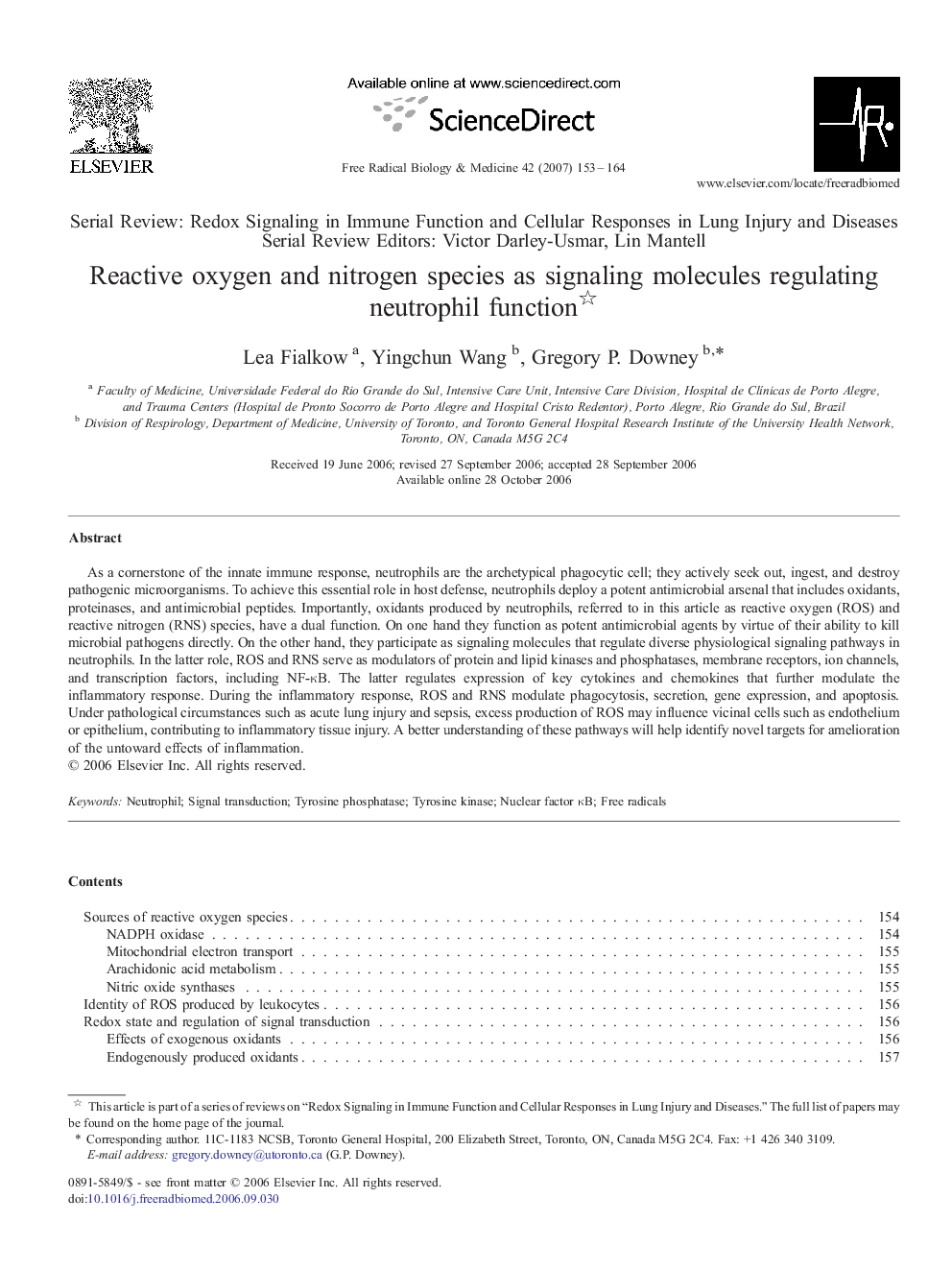| کد مقاله | کد نشریه | سال انتشار | مقاله انگلیسی | نسخه تمام متن |
|---|---|---|---|---|
| 1911280 | 1046810 | 2007 | 12 صفحه PDF | دانلود رایگان |

As a cornerstone of the innate immune response, neutrophils are the archetypical phagocytic cell; they actively seek out, ingest, and destroy pathogenic microorganisms. To achieve this essential role in host defense, neutrophils deploy a potent antimicrobial arsenal that includes oxidants, proteinases, and antimicrobial peptides. Importantly, oxidants produced by neutrophils, referred to in this article as reactive oxygen (ROS) and reactive nitrogen (RNS) species, have a dual function. On one hand they function as potent antimicrobial agents by virtue of their ability to kill microbial pathogens directly. On the other hand, they participate as signaling molecules that regulate diverse physiological signaling pathways in neutrophils. In the latter role, ROS and RNS serve as modulators of protein and lipid kinases and phosphatases, membrane receptors, ion channels, and transcription factors, including NF-κB. The latter regulates expression of key cytokines and chemokines that further modulate the inflammatory response. During the inflammatory response, ROS and RNS modulate phagocytosis, secretion, gene expression, and apoptosis. Under pathological circumstances such as acute lung injury and sepsis, excess production of ROS may influence vicinal cells such as endothelium or epithelium, contributing to inflammatory tissue injury. A better understanding of these pathways will help identify novel targets for amelioration of the untoward effects of inflammation.
Journal: Free Radical Biology and Medicine - Volume 42, Issue 2, 15 January 2007, Pages 153–164